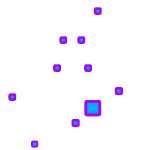SCACCHOCAST
A Chess Variant By Simon Edward JeppsDownload ~ PDF ↷ ⋱ ⋱ Chatblog ⨗
Introduction
 Scacchocast is an 8x8 variant featuring the sole addition of three conkers per player. A minimalistic yet intellectually earthen approach to augmenting the game unto greater depths.
Scacchocast is an 8x8 variant featuring the sole addition of three conkers per player. A minimalistic yet intellectually earthen approach to augmenting the game unto greater depths.
Scacchocast gets its name from the Italian "scacchi" meaning "chess" yet also "hippocastanum" meaning the Horse Chestnut "conker" tree ~ this is where the "hi" becomes "hocast".
Whilst it is true that Grandmasters have been saying for a hundred years now that the game of Chess has been "played out" and needs to evolve, the problem Chess faces is actually much, much greater.
This is because the game of Chess as we have come to embrace and familiarise ourselves with is actually regarded as something "sacred" and therefore somewhat of an untouchable sacrament.
Herewith you can behold its divinity in the fact that regardless of how popular a Chess Variant may have become, even to be featured in major world forums, none such alternative 'evolutions' of the game have ever succeeded the Classical game loved immemorial.
Whilst even I myself have spent decades studying the evolutionary mechanics and practical harmonics of Chess Variants ~ someone I self-title a "Chessician" ~ undertaking a passionately devoted labour of love, resulting in Mageca Chess ~ what I believe to be the only rational evolution of Chess unto a 10x10 board ~ nevertheless even I myself acknowledge how the Classical 8x8 game resonates an undying musical majesty such made only of the divinest orchestra.
No other variation of the game plays this music, it just simply doesn't harmonize in the same way, no matter how much you have worked and studied hard to make it happen.
So the paradox we face is actually moreso how to change Chess without changing Chess.
"OK... but with conkers..?"
Yes. You see, what I have done with Scacchocast is maintain the 8x8, preserved the Classical array of pieces, yet augmented the gameplay unto fantastical new dimensions.
All with the seemingly natural embrace of conkers. Here, let me explain.
◆ The conkers of Scacchocast improve the Classical game by:
- Replenishing the balance of leapers & colour-bounds.
- Creating a new tactical element of strategy-plan calculation.
- Augmenting & nourishing exhausted or indeed flank Opening lines.
- Providing fantastic new moves, board-logic & inter-piece enhancements.
- Resurrecting & embracing ancient characteristics of historic cultural significance.



How To Play
Each player is provided THREE conkers each to compliment their piece array. Each conker is placed off-board, one behind the Rook, one the Knight and one the Bishop. The conkers are placed to each the player's right hand, so three to the King-side for White and three to the Queen-side for Black.The conkers are not pieces but they are 'power tokens', later discarded individually into a basket or pouch as they are utilized and exhausted.
How you employ any conker determines the remaining powers available.
Should you employ a single-conker power first, your only remaining powers will be the double-conker power or two single-conker powers. Vice versa, should you employ the double-conker power first, your only remaining power will be a single-conker power. Finally, should you employ ANY of these first, the triple-conker power will no longer be available.
Here then is the genius tactical element of Scacchocast. Which power does one employ and whence in the game? Should you hold back all powers until the middle/endgame and then employ the triple-conker power? It is a careful balancing act and the pinnacle wonder of the game.
The powers of thy conkers are as follows.
Single Conker
ONE conker may be utilized and discarded in a single move whence employing any of the special single-conker powers.- Knight = May LEAP without capturing to the SECOND square away in any direction.
- Bishop = May SLIDE without capturing TWO squares orthogonally.
- Rook = May SLIDE without capturing TWO squares diagonally.
This is why each one conker is placed off-board behind the Rook, one the Knight and one the Bishop, because doing this provides an indicator of which powers have or have not yet been used.
Double Conker
TWO conkers may be utilized and discarded in a single move whence employing the special double-conker bonus power.- 2-conker = King may leap without capturing like a Knight.
This special King-Knight move pays tribute to one of two ancient characteristics of Chess which I have resurrected in Scacchocast.
The original game of Indian Chaturanga features a rule which allows the King to move like a Knight for one time in the game. This was a defensive trait given to the King which Western Chess replaced with 'Castling' once the game had adopted different mechanics.
I thought it would be a wonderful aspect to bring back into the game, yet moderately so through the strategical employment of conker power-tokens.
Triple Conker
All THREE conkers may be utilized and discarded in a single move whence employing the special triple-conker bonus power.- 3-conker = Queen may leap without capturing like a Camel.
As per the King, this power is of course only for special circumstances or strategies since it exhausts all of your conkers.
This special Queen-Camel move pays tribute to the second of two ancient characteristics of Chess which I have resurrected in Scacchocast.
Here then we can see that both the Double & Triple conker powers add an extra dimension of strategical providence. Players will thus have to carefully judge and consider with caution how many conkers, what particular conkers and at which stage in the game to employ their conkers ~ lest they make the mistake of having utilized too many or the wrong kind of conker too soon, leaving the opponent with perhaps a better hand.
Notation
The only change necessary to Classical game-notation is the indication that an otherwise unusual move was actually made through the employment of a conker power-token.Thus when making such a move, it should be recorded with a crossed zero {ø} suffix to the regular move notation.
For example, 1. Nb3 ø.
Should the double or triple-conker powers be used then the number of crossed zeros should increase respectively to two or three.
For example, 1. Qc4 øøø.
A most unusual and probably ridiculous first move, but an example nevertheless!
Of course should a player employ the double-conker power, it would be helpful to know which two conkers were used when reviewing the game record, should the one remaining conker never prove itself to be used also. Knowing which conker remained helps in analysis to detect other move options missed by the player.
This can be recorded by noting the file of the conker which remains.
For example, #. Kc4 øgø.
Or alternatively a note can be added to the end of the game record indicating any remaining conkers on the table.
Personally, I would draw them onto a final position diagram if possible.



Summary
 64 squares, 32 pieces & 6 conkers... above all else within the fantastical realms of Chessvariantism... Scacchocast is my most beloved game.
64 squares, 32 pieces & 6 conkers... above all else within the fantastical realms of Chessvariantism... Scacchocast is my most beloved game.
Where do we go from the Classic whence amidst all the thousands upon thousands of variants invented by thousands upon thousands of people throughout the world, professional players and Grandmasters alike cannot agree on a mutual evolution of the game worthy of becoming the new ritual sport?
Sure, players of all spectrums have time and time again pushed the idea of migrating to a larger board, a 10x8, a 10x9 or even a 9x9. Of course there are also many amateur variant boards of even greater dimensions than these.
Yet amidst all this, what remains prevailant is the undying harmony and culture of the Classic 64 square game. As I mentioned earlier, whilst it is true that Grandmasters have been saying for a hundred years now that the game of Chess has been "played out" and needs to evolve, the problem we actually face is moreso the paradox of how to change Chess without changing Chess.
We want more Opening systems, we want more "pieces" somehow, we kind of desire more squares or territory and yet... above all we feel a longing for something, perhaps almost magical, yet also natural and which empowers us with a new vibrant spirit of competition. Something which solves the 64sq paradox.
Yet what is this magic and would this our ancient evergrowing desire which has strengthened over time for such magic, whence fulfilled, prove itself to be the solution to all other ailments our Classic game has come to harbour?
Well, it is my belief that what Chess really needs is a touch of Mother Nature, a touch of magical earthen spirit... a touch of God. For this reason, I have given here unto the world... Scacchocast.
Thank you for reading.
Chatblog ⨗
 |  |





